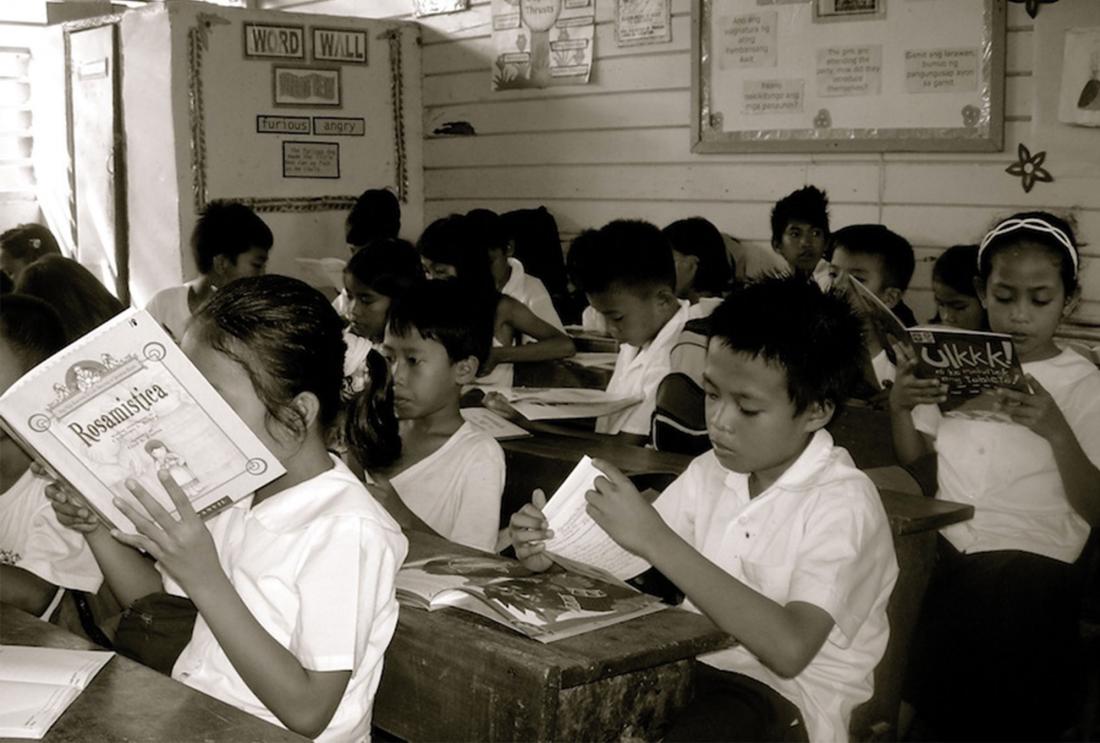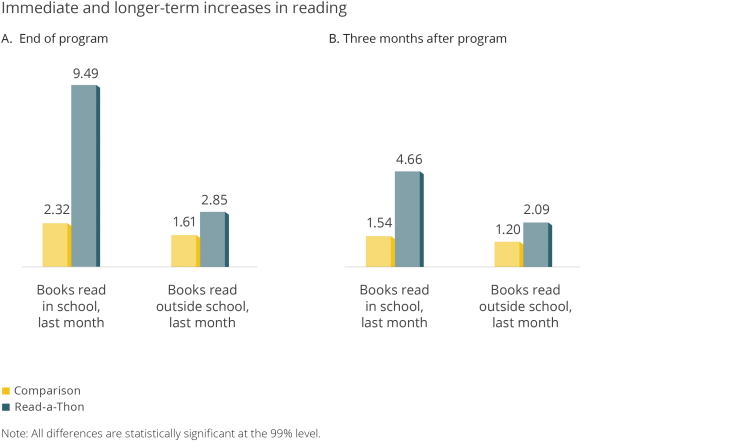Enabling Young Readers: A Primary School Reading Program in the Philippines
- Students
- Teachers
- Student learning
- Training
Researchers evaluated a 31-day read-a-thon where students were encouraged to read as many books as possible through daily reading activities in school, such as storytelling sessions, reading games, and posters that display each class’s progress. Overall, the results suggest that encouraging an increased use of age appropriate reading materials by students was a viable strategy for improving student’s reading skills.
Policy issue
Initiatives such as the United Nations Millennium Development Goals, which call for universal primary education by 2015, have pushed developing countries to extend primary school access. Yet increases in the quantity of schools have not always led to corresponding increases in the quality of the education offered, and in many developing countries, the reading ability of many students is well below the appropriate level for their grade. The Millennium Development Goal specifically highlights the need to increase literacy rates among youth. However, it is important to understand what types of programs actually have positive and persistent effects on literacy levels and academic performance. Can a month-long reading marathon have more substantial effects?
Context of the evaluation
Though the Philippine government spends 16 percent of its budget on education, most of its expenditures are focused on staff salaries, with very little money left over for training, textbooks or buildings.1 Because of this, the public primary schools in the Philippines generally lack sufficient reading resources.
The Sa Aklat Sisikat Foundation (SAS) is a Filipino non-profit that promotes reading among Filipino children. SAS works with public schools around the country, providing resources to motivate students to make reading a part of their daily lives, including reading programs for kids, teacher training and conferences, and materials on the latest teaching techniques. Since the inception of the organization in 1999, SAS has implemented its reading program in over 750 public schools, reaching nearly 150,000 students.2

Details of the intervention
The SAS Reading Program consists of a two-day training program for fourth-grade teachers on the implementation of a reading marathon, followed by a 31-day reading marathon for fourth-grade students. The program is targeted at fourth grade students because this is the age at which the Philippine school system expects students to have developed sufficient reading fluency to enjoy reading independently.
During the 31-day read-a-thon, students are encouraged to read as many books as possible through daily reading activities in school, such as storytelling sessions, reading games, and posters that display each class’s progress. Additionally, SAS provides 60 children’s storybooks in both Filipino and English, reading diaries, and reading progress charts to each of the participating schools. Of the one hundred schools that participated in this evaluation, 50 were randomly selected to receive the materials and participate in the reading marathon.
A baseline survey was conducted in all 100 schools in July 2009 . Two follow-up surveys were then conducted - just after the completion of the reading marathon and then again three months later at the end of the academic year – to measure program impact. The study also measured students’ reading skills as well as their knowledge of other subjects to assess the possibility of spillovers .
Results and policy lessons
Overall, the results suggest that encouraging an increased use of age appropriate reading materials by students was a viable strategy for improving student’s reading skills. Immediately after the treatment, students reported that the number of books they read at school increased from 1.9 to 4.2 in the last week and from 2.3 to 9.5 in the last month. At the same time, their reading scores increased by 0.13 standard deviations.
These positive effects persisted after the end of the program. Three months after the reading marathon, students in the treatment group still read 3.1 more books in the previous month and scored 0.06 standard deviations higher on reading tests, relative to those in the comparison group.

These results suggest that implementing short-term programs that promote reading can be an effective way to cultivate good habits in children and improve their reading ability.
In J-PAL's comparative cost-effectiveness analysis, the read-a-thon program led to a 1.18 standard deviation improvement in test scores per US$100 spent. For more information, see the full comparative cost-effectiveness analysis.
Rouselle Lavado and Emilyn Cabanda. “The efficiency of health and education expenditures in the Philippines.” Central European Journal of Operations Research (2009) 17:275–291.
The Sa Aklat Sisikat Foundation (SAS) was reborn as Teach for the Philippines in 2013